Cinema 4D for Character Creation
By Aarón Martínez , Illustrator and 3D designer
Learn how to model, texturize, light, and render 3D characters in a professional way
- Domestika Basics 6 coursesBest seller Spanish with subtitles in English
- 100% positive reviews (431)
- 13369 students
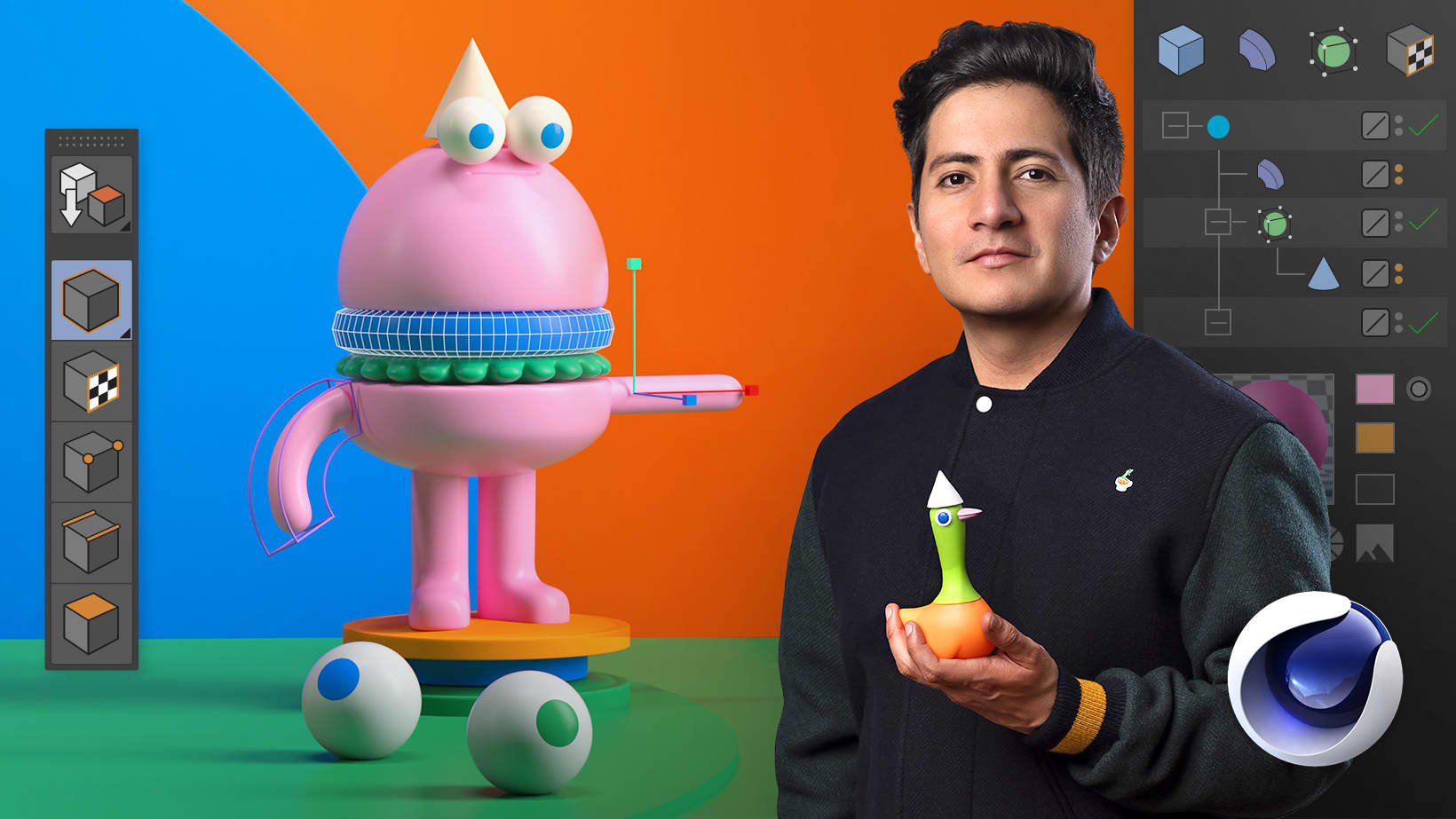
Learn how to model, texturize, light, and render 3D characters in a professional way
Domestika Basics · 6 courses included
-
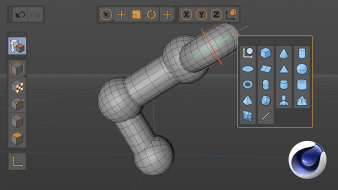
Course 1 - Introduction
By Aarón Martínez
Take your first steps with Cinema 4D and start creating basic figures
-
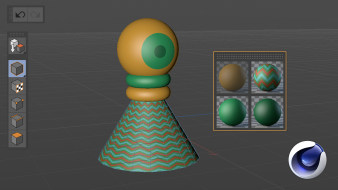
Course 2 - Developing characters step-by-step
By Aarón Martínez
Start developing incredible characters with basic tools
-
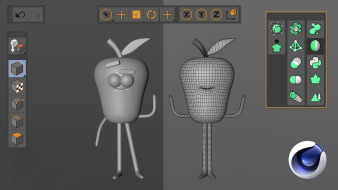
Course 3 - Fruit and Vegetables
By Aarón Martínez
Learn how to design and bring life to fruit and vegetables
-
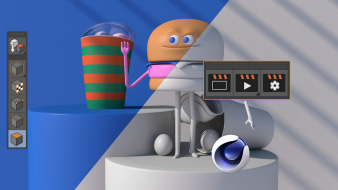
Course 4 - Food and Packaging
By Aarón Martínez
Model 3D characters based on food and their packaging
-
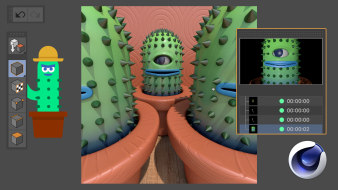
Course 5 - Animals and Plants
By Aarón Martínez
Learn how to create sketches, model, and bring plants and animals to life
-
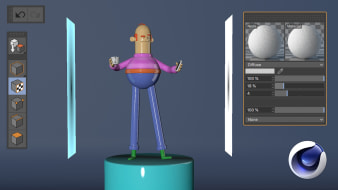
Course 6 - Monsters and people
By Aarón Martínez
Learn how to create monsters and characters on Cinema 4D
A simple and intuitive way of learning how to use 3D software such as Cinema 4D is to focus on the creation of characters. Through the use of basic shapes and some tools, you can achieve a complete understanding of the program that will help you face increasingly complex projects.
Illustrator and 3D designer Aarón Martínez develops a complete methodology to learn how to use Cinema 4D in 6 courses, in an intuitive way, allowing for grand results in little time.
If you want to increase your knowledge of 3D design with Aarón, you can also take some of his other courses: Characters in Cinema 4D: from the Sketch to 3D Printing, Prototypes and Product Viewing in Cinema 4D, Compositions with Cinema 4D and OctaneRender, 3D Illustration with 4D Cinema 4D.
Start by getting to know the software’s interface, as well as the differences between some versions; see different ways of navigating the program, the creation and modification of the objects, hierarchies, and more.
In the second course, get your first introduction to character design, creating them from scratch and without references, using the software’s basic tools, to create shapes and add color.
Continue learning how to create characters using fruit and vegetables as a reference, introducing tools and techniques such as symmetry, lighting, and the use of different materials.
Next, use food and packaging as your references to learn how to simplify shapes and the modeling of objects. See how to add eyes, mouths, hands, and spline projections.
In the fifth course, learn how to model animals and plants, and start to use tools such as Pose Morph to change positioning and expressions.
Let your imagination take its course in the sixth and last course of this Domestika Basics, modeling people and monsters with a variety of horns, eyes, noses, hair, and mouths.
Technical requirements
⦁ A computer with Windows 7 (or higher) or macOS 10.7 Lion (or higher).
⦁ Cinema 4D R16 or higher. You can download it on the Maxon website.
- 100% positive reviews (431)
- 13369 students
- 59 lessons (9h 11m)
- 6 courses
- 70 downloads (70 files)
- Online and at your own pace
- Available on the app
- Audio: Spanish
- Spanish, English, Portuguese, German, French, Italian, Polish, Dutch
- Level: Beginner
- Unlimited access forever
Reviews

Aarón Martínez is an illustrator and product designer. His creations are aimed at real and visual function, something he achieves by carefully observing the environment, materials and textures. His work spans several disciplines, from creating 3D characters for advertising or design objects, to designing machines that detect cancer.
He works as a freelance for various brands and agencies such as: Autodesk, Nexus studio, Enormous Brands, Cisco, Grupo W, Volkswagen, Flock, Moi, BBmundo, Usbek & RIka, History Land, etc. In addition, he is a professor of 3D modeling and vector illustration.
Content
Course 1 - Introduction
-
U1
Presentation
-
Presentation
-
-
U2
Cinema 4D r21 and its differences between versions
-
Cinema 4D r21 and its differences between versions
-
-
U3
First document and work environments
-
First document and work environments
-
-
U4
Interface and the different ways of moving around in C4D
-
Interface and the different ways of moving around in C4D
-
-
U5
Primitive figures
-
Primitive figures
-
-
U6
Editable objects: points, lines and faces
-
Editable objects: points, lines and faces
-
-
U7
Volume with vectors
-
Volume with vectors
-
-
U8
Symmetry, connector and metaball
-
Symmetry, connector and metaball
-
-
U9
Introduction to surface subdivision
-
Introduction to surface subdivision
-
-
U10
Add and remove lines
-
Add and remove lines
-
-
U11
Practice: create and modify
-
Create and modify
-
Course 2 - Developing characters step-by-step
-
U1
Spontaneous characters
-
Spontaneous characters
-
-
U2
Deformers
-
Deformers
-
-
U3
Mograph (cloner)
-
Mograph (cloner)
-
-
U4
Simulations: rigid and soft objects
-
Simulations: rigid and soft objects
-
-
U5
Basic materials
-
Basic materials
-
-
U6
Output to basic render
-
Output to basic render
-
-
U7
Practice: first characters
-
First characters
-
Course 3 - Fruit and Vegetables
-
U1
Character sketches
-
Character sketches
-
-
U2
Choice of primitive objects and number of segments
-
Choice of primitive objects and number of segments
-
-
U3
Body shaping
-
Body shaping
-
-
U4
Legs and arms
-
Legs and arms
-
-
U5
Types of eyes
-
Types of eyes
-
-
U6
Personality
-
Personality
-
-
U7
Textures
-
Textures
-
-
U8
Render with HDRI
-
Render with HDRI
-
-
U9
Practice: citrus family and a fly
-
Practice: citrus family and a fly
-
Practice: citrus family and a fly 2
-
Course 4 - Food and Packaging
-
U1
Character sketches
-
Character sketches
-
-
U2
Food modeling by parts
-
Food modeling by parts
-
-
U3
Details with spline projection
-
Details with projection of splines 1
-
Details with projection of splines 2
-
-
U4
Hand modeling
-
Hand modeling
-
-
U5
Union of objects
-
Union of objects
-
-
U6
Bottle modeling
-
Bottle modeling
-
Bottle modeling 2
-
-
U7
Composition
-
Composition
-
-
U8
Materials
-
materials
-
-
U9
Render with sky
-
Render with sky
-
-
U10
Practice: hamburger in parts
-
Practice: hamburger in parts
-
Course 5 - Animals and Plants
-
U1
Character sketches
-
Character sketches
-
-
U2
Animal modeling
-
Animal modeling
-
Animal modeling 2
-
-
U3
Personality, accessories and pose
-
Personality, accessories and pose
-
-
U4
Plant and pot modeling
-
Plant and pot modeling
-
-
U5
Textures
-
Textures
-
-
U6
Render
-
Render
-
-
U7
Practice: character and his plant
-
Practice: character and his plant
-
Course 6 - Monsters and people
-
U1
Character sketches
-
Character sketches
-
-
U2
Monster modeling
-
Monster modeling
-
-
U3
Horns, noses, mouths and teeth
-
Horns, noses, mouths and teeth
-
-
U4
Expressions, poses and accessories
-
Expressions, poses and accessories
-
-
U5
Modeling humans
-
Modeling humans
-
-
U6
Hair types
-
Hair types
-
-
U7
Character pose
-
Character pose
-
-
U8
Accessories
-
accessories
-
-
U9
Textures
-
Textures
-
-
U10
Render
-
Render
-
-
U11
Practice: boy and his friend
-
Practice: boy and his friend
-
See the content of the 6 courses
About Domestika Basics
Domestika Basics is a series of courses focused on teaching the most commonly used software by creative professionals worldwide.
The content has been meticulously curated and is intended for both students going into a new creative field and more experienced professionals who want to polish their skills.
Learn with the best Domestika teachers through practical lessons, tons of resources, and a progressive difficulty that'll allow you to see results from day one.
Domestika Basics will allow you to step up your professional game and be prepared to score better projects.
-
Without prior knowledge.
Domestika Basics gives you everything you need to get started in a new creative field and become an expert in it.
-
Focused on the tool.
Discover its main components, techniques, and the tried-and-true methods you need to master it.
-
Learn fast
With a straightforward, step-by-step approach, our outstanding professionals will teach you how to get the most out of the program.
-
Certificates Plus
If you're a Plus member, get a custom certificate signed by your teacher for every course. Share it on your portfolio, social media, or wherever you like.




miguelrosales199814
Excelente curso para principiantes e intermedios, sirve muchísimo.
View translation
Hide translation
josepanda29
Excelente curso me ayudo mucho a iniciar y tener un nivel bastante bueno de cinema 4D
View translation
Hide translation
daniruano20
Excelente curso, me sirvió muchísimo :)
View translation
Hide translation
mpradojuan
Excelente curso, gracias Aarón por tu dedicación en cada lección!
View translation
Hide translation
brunobgoncalves
Excelente conteúdo, recomendo!
View translation
Hide translation